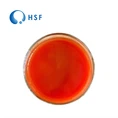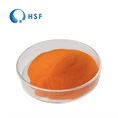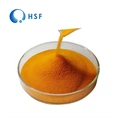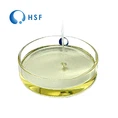Skin aging is caused by a variety of internal and external factors. It is characterized by the degeneration of keratinocyte function, slowed epidermal renewal, decreased barrier function, and weakened ability to repair damage. The dermis experiences a reduction in fibroblast count, along with diminished function and decreased synthesis of collagen and extracellular matrix. This manifests as hyperpigmentation, wrinkles, sagging, and dilated blood vessels. In recent years, the use of oral nutritional supplements to improve skin appearance has become a trend. "Nutricosmetics" are a type of natural health product that enhances the texture and appearance of human skin, hair, and nails.
Skin aging
Skin aging can be primarily categorized into two types: ① Intrinsic skin aging: It progresses with age, leading to the decline of epidermal and dermal cell function and a reduction in extracellular matrix, resulting in fine lines and thinning of the skin. ② Extrinsic skin aging: This is mainly caused by photoaging, but factors such as air pollution, smoking, alcohol consumption, and psychological stress also contribute to it. It leads to degeneration and degradation of dermal collagen fibers, abnormal deposition of elastin in the papillary layer, and inflammatory changes, resulting in deep wrinkles, skin laxity, and pigmentation. Both types of skin aging often occur simultaneously, with the most significant changes observed in the dermis. Wrinkles and decreased elasticity are the consequences of progressive atrophy of the dermis. Intrinsic and extrinsic skin aging is associated with the generation of reactive oxygen species (ROS) through oxidative metabolism and exposure to ultraviolet radiation (UV). The accumulation of ROS ultimately leads to DNA damage, inflammatory reactions, depletion of antioxidants, and the production of matrix metalloproteinases (MMPs) that degrade collagen and elastin. Therefore, ROS formation is a crucial mechanism underlying skin aging.

Mechanisms of How Beauty Supplements Improve Skin Aging
Certain dietary ingredients with antioxidant properties can indirectly impact the skin through secondary messengers or, during the digestion process, pass through the intestinal mucosal barrier and reach different tissues in the body, including the skin. These bioactive compounds can be distributed throughout all skin structures (epidermis, dermis, subcutaneous fat) and sebaceous glands. The mechanisms by which oral beauty supplements exert anti-aging effects on the skin are as follows:
- Prevention of DNA and mtDNA damage.
- Clearance of oxygen free radicals.
- Anti-inflammatory effects.
- Inhibition of glycation.

Common beauty supplements
- Collagen
Collagen is a naturally occurring protein that makes up approximately 70% of the dry weight of the human dermis. It, along with elastic fibers and hyaluronic acid, forms the main structural component of the extracellular matrix in the dermis. Collagen typically has repeating sequences of glycine-proline-hydroxyproline, which form a unique triple helix structure. Orally consumed collagen is mainly derived from porcine skin, bovine skin, and tendons, and is processed into dietary supplements in denatured form (gelatin) or enzymatically hydrolyzed form (collagen peptides, CP). In the intestine, CP is digested into dipeptides (proline-hydroxyproline) or tripeptides (glycine-proline-hydroxyproline), which are absorbed into the bloodstream through oligopeptide transporter proteins across the intestinal mucosa and can persist in the skin for up to 96 hours.
- Hyaluronic acid (HA)
HA is a non-sulfated glycosaminoglycan composed of repeating units of D-glucuronic acid and N-acetyl-D-glucosamine. As a major component of the extracellular matrix in the skin, HA is present around and at the junction of collagen and elastin fibers, helping to maintain the proper structure of collagen and elastin. In aging skin, a lack of HA may lead to the degradation of collagen and elastin fibers, resulting in the appearance of fine lines, wrinkles, and deepening of nasolabial folds [21]. HA has the ability to bind water approximately 1,000 times its weight, which enables it to effectively hydrate the skin, thus reducing the formation of wrinkles, improving deep wrinkles, and diminishing existing wrinkles.
HA is currently used in hydrogels and dermal fillers, and its cosmetic effects are mainly related to inducing tissue enhancement, improving skin hydration, and stimulating collagen synthesis.

- Astaxanthin (ASX)
Astaxanthin is a highly efficient antioxidant that exerts strong antioxidant activity by scavenging free radicals. Its ability to eliminate singlet oxygen is approximately 1,000 times that of coenzyme Q10. In vitro and in vivo studies have shown that ASX plays a role in the treatment and prevention of skin aging. ASX maintains skin health and responds to skin damage mainly due to its antioxidant, anti-inflammatory, immune-regulating, and DNA repair properties.
- Carotenoids
Carotenoids are a class of widely distributed lipophilic molecules in nature. They are synthesized by plants, algae, fungi, and bacteria. The main types of carotenoids include β-carotene, lycopene, lutein, and zeaxanthin, which provide various colors such as red and orange to vegetables and fruits. β-carotene is the most common carotenoid in mammalian diets and has the ability to inhibit singlet oxygen and scavenge free radicals. Research has found that β-carotene (as well as other carotenoids) can reduce the gene expression of hydrogen peroxide and superoxide dismutase in human dermal fibroblasts exposed to UVA radiation.
- Coenzyme Q10
Coenzyme Q10 is an endogenous lipophilic compound. It exists in three forms: ubiquinone, semiquinone, and ubiquinol. Ubiquinone is the most abundant form in humans and most mammals. As an antioxidant, Coenzyme Q10 may prevent the activation of inflammatory signaling pathways by scavenging free radicals.
In recent years, studies have also confirmed the antioxidant effect of Coenzyme Q10, which can maintain the energy levels of human keratinocytes and accelerate the recovery of ATP levels in irradiated human fibroblasts. Researchers believe that the skin barrier limits the penetration of topically applied Coenzyme Q10, and oral administration may be more effective in delivering it to the dermis, improving skin elasticity and firmness. The current recommended dosage range is 30-150 mg/day.

HSF Biotech Company Fermtek™ Fermentation Series
The beauty industry has witnessed a growing trend towards incorporating natural and scientifically proven ingredients. Among these, fermented compounds have gained significant attention due to their potential benefits for skin health and appearance.
The incorporation of fermented astaxanthin, lycopene, beta-carotene, and Coenzyme Q10 in beauty products showcases their immense potential for enhancing skin health and appearance. These fermented compounds offer improved bioavailability and efficacy, allowing for better absorption and utilization by the skin. As the demand for natural and scientifically backed ingredients continues to rise, fermented products prove to be a valuable addition to the beauty industry, providing consumers with effective and sustainable skincare options.

Want to get FREE SAMPLES, please contact our specialists at sales@healthfulbio.com.





